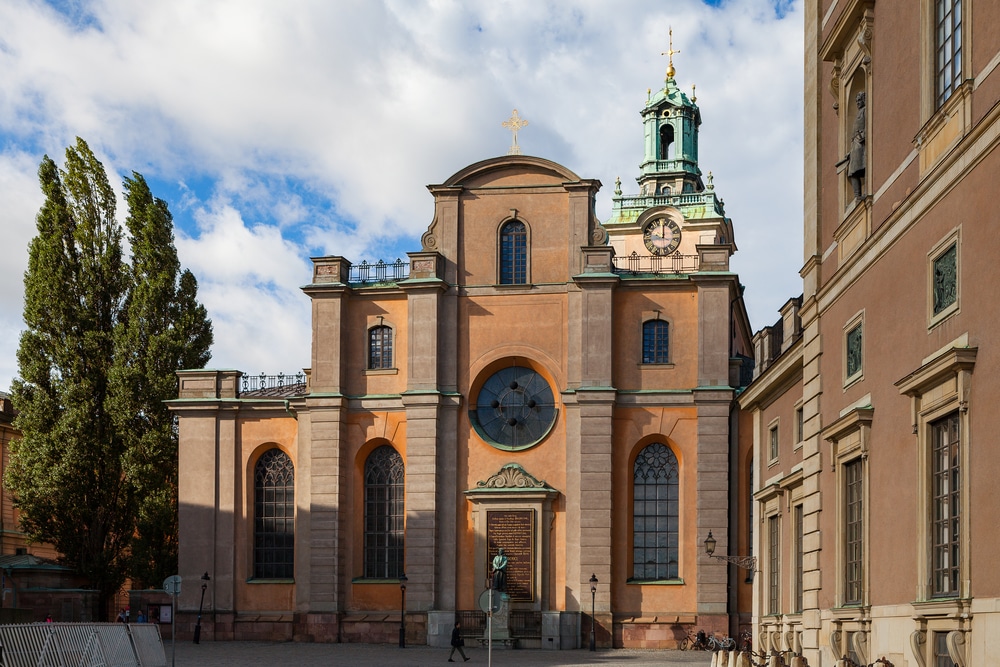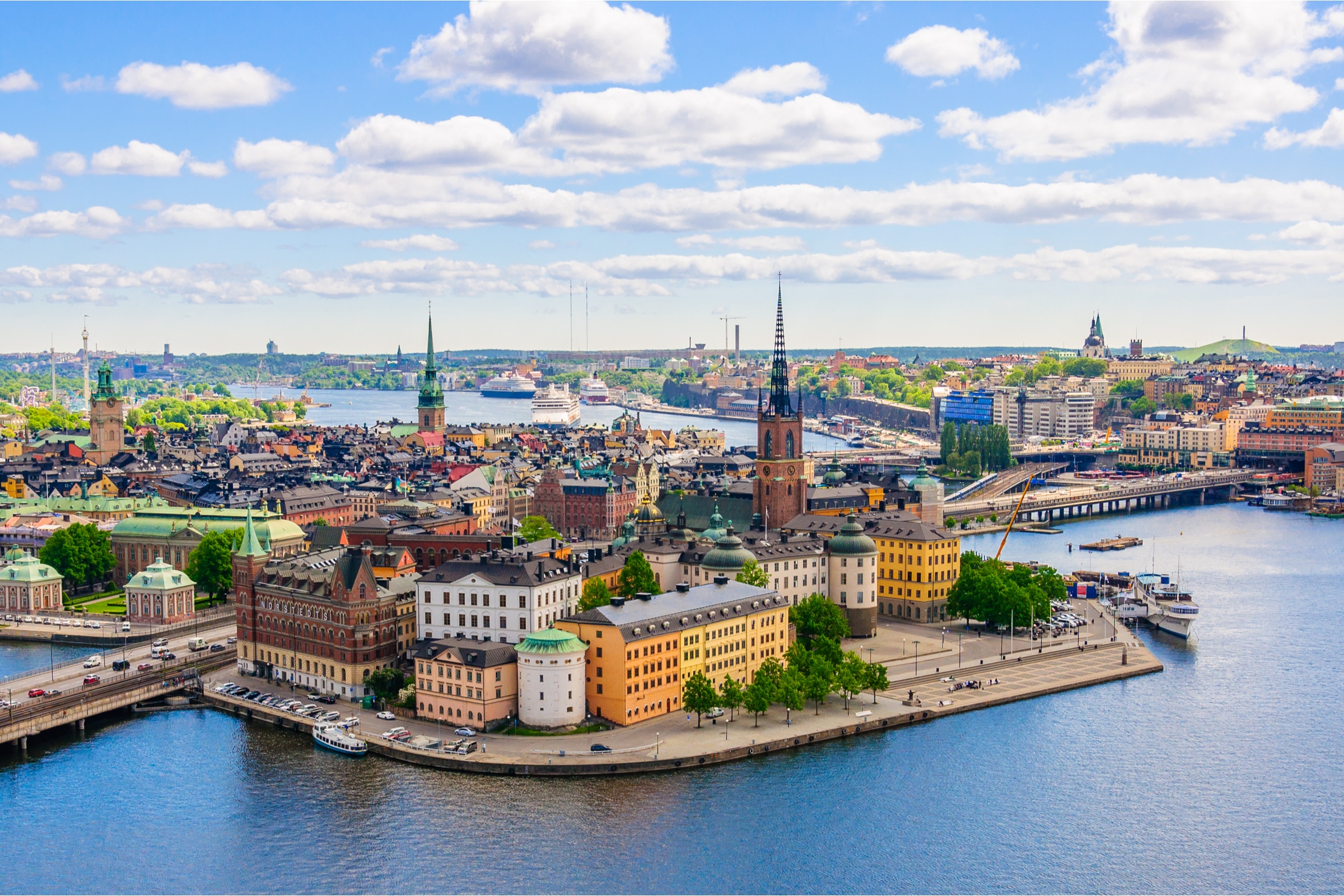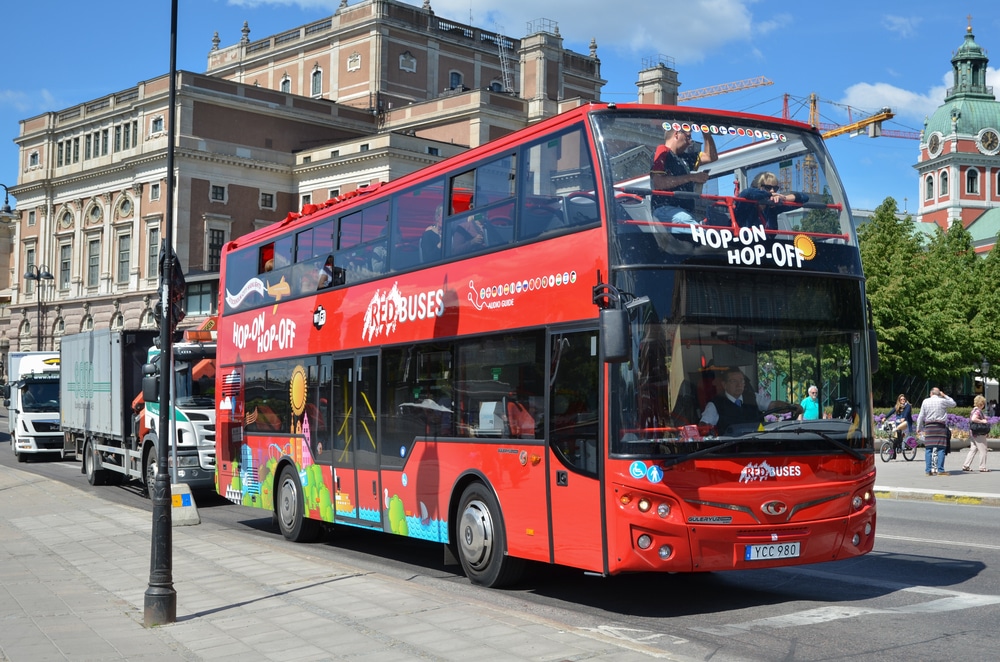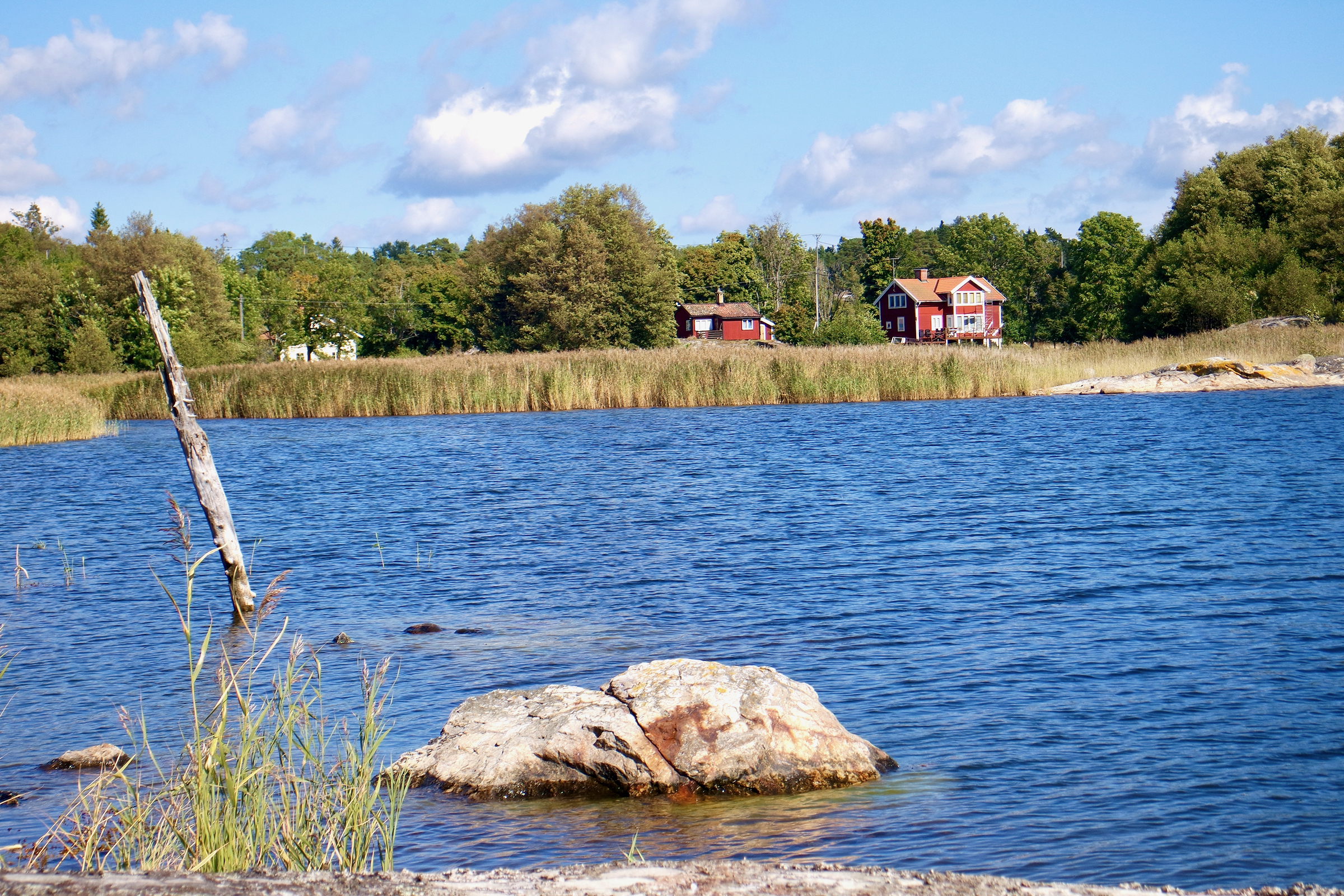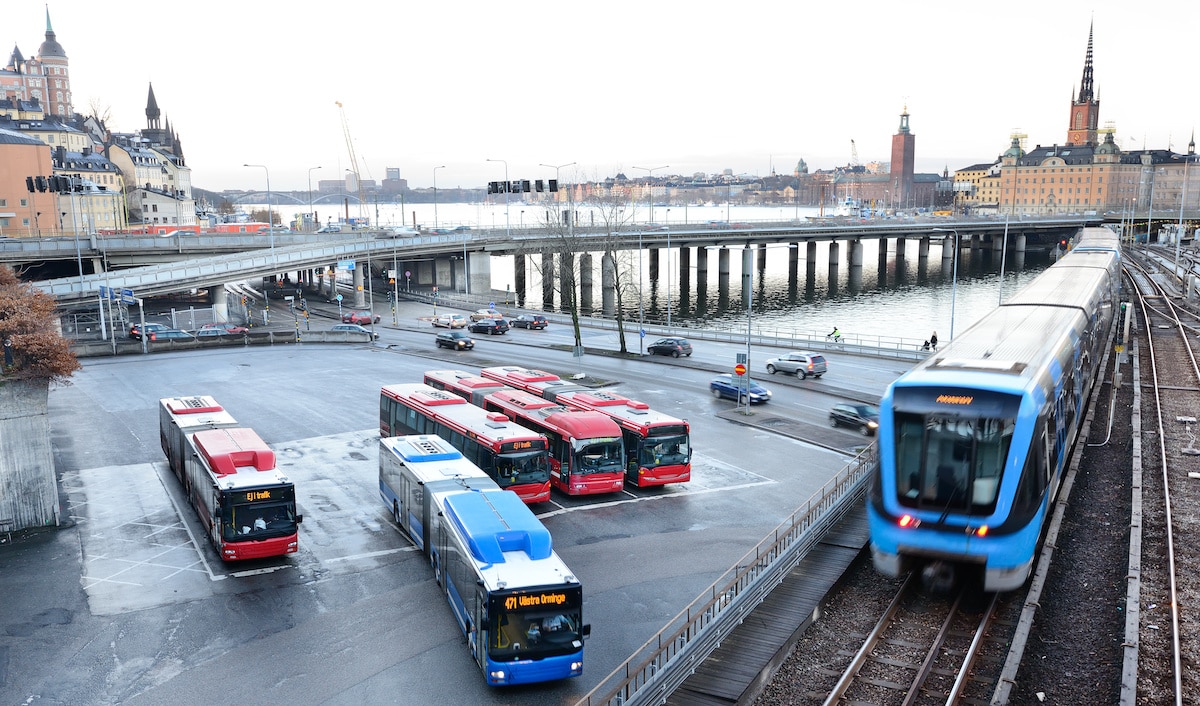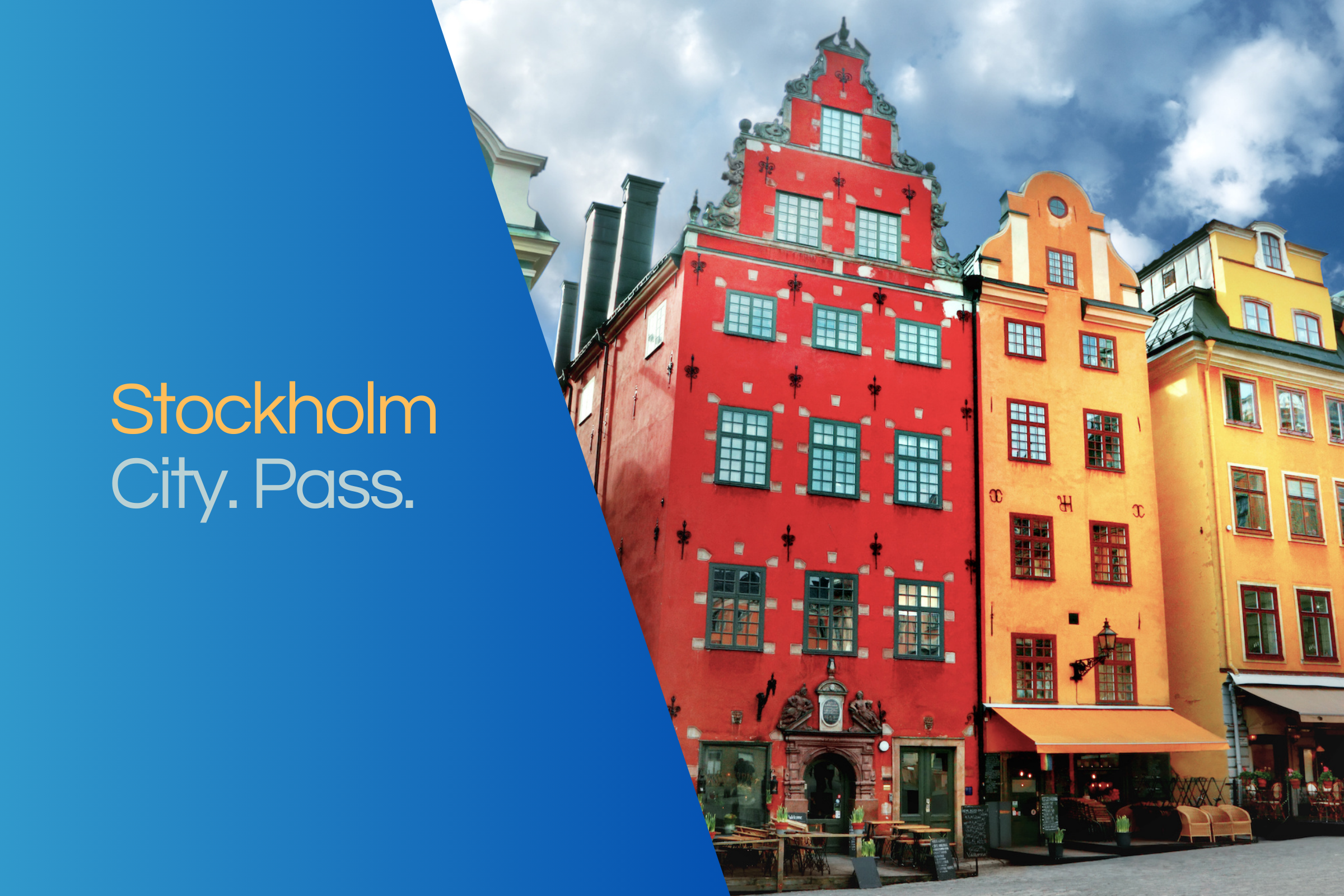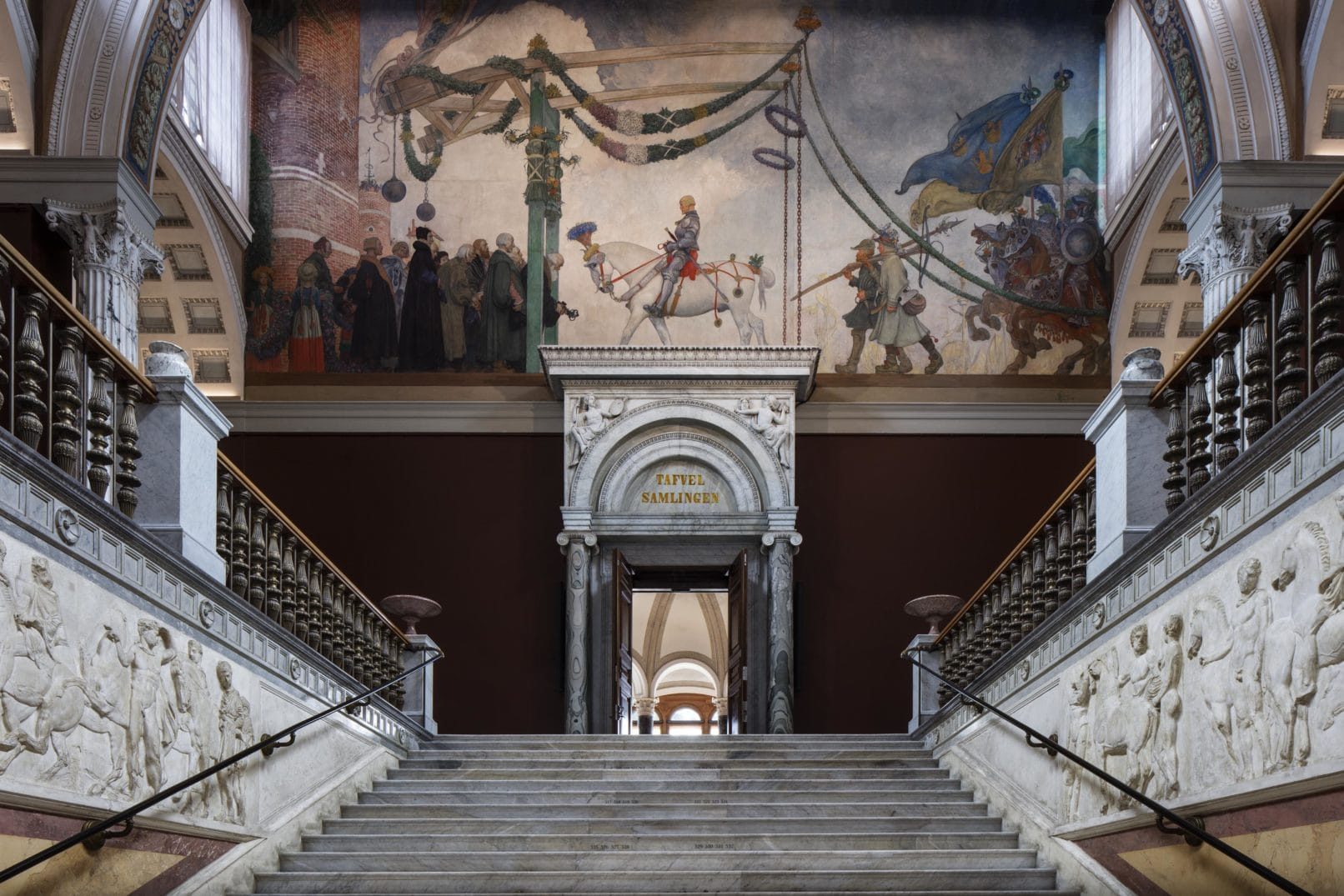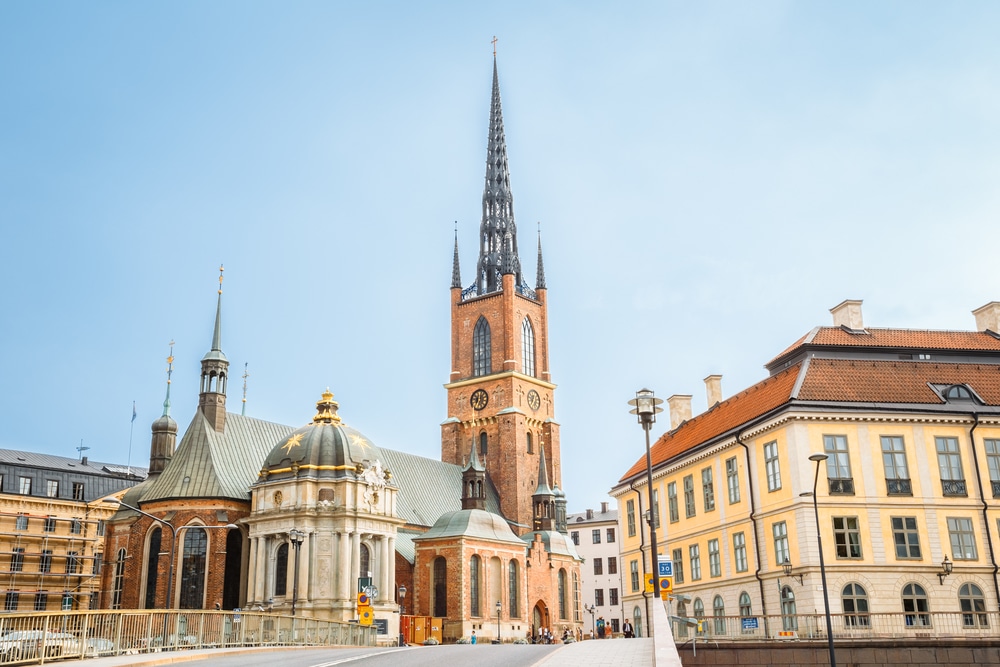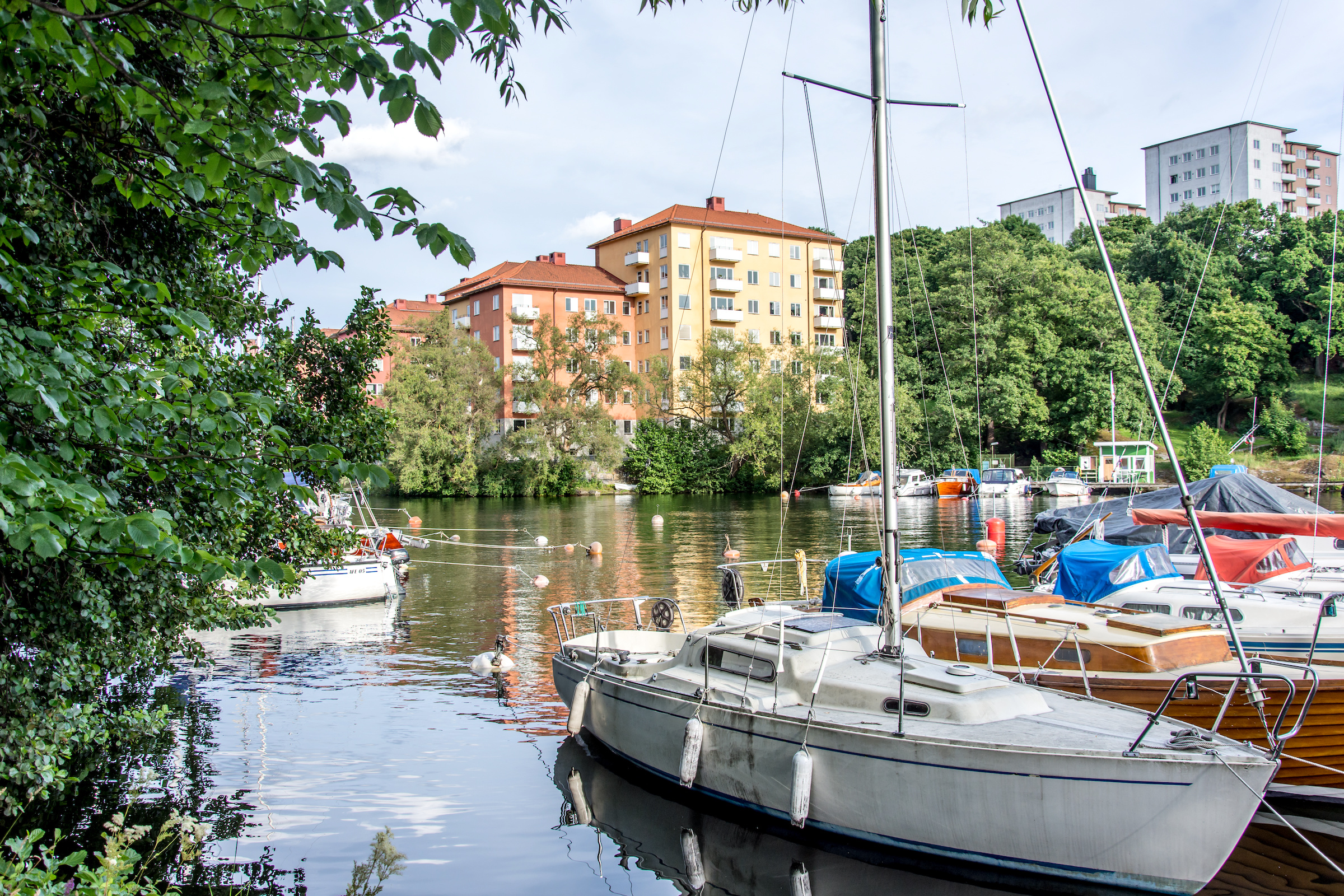Saint Nicholas Church in Stockholm's old town Gamla Stan is usually just called Storkyrkan (the big church). It is the oldest church in the city and is located right next to Stockholm Castle. Since 1942, it is also the bishop's seat and thus the cathedral church of the diocese of Stockholm.
The oldest church in Stockholm
The oldest parts of the church date back to the 13th century, the time when it was first mentioned in documents. Birger Jarl, the founder of Stockholm, is said to have commissioned its construction himself. Storkyrkan was named after the patron saint of the seafarers, Saint Nicholas, as the hanseatic city Stockholm was the place of residence and business of numerous merchants from the German-speaking area, the political and economic elite of that time. Several rebuildings and extensions followed until the church finally got its current shape of a five-aisled hall church at the end of the 15th century. The interior is an impressive testimony to the brick Gothic style, the exterior of the church was redesigned in the Baroque style at the end of the 17th century in order to better correspond with the castle building. The plastering carried out at the same time was later removed from the columns in order to approximate the original character of the building again.
The Swedish reformer Olaus Petri also worked from the Storkyrkan, and by order of King Gustav Vasa, Saint Nicholas Church became Protestant in 1527. The church interior houses a mechanical organ with a case from 1796 and an organ movement from 1960, as well as numerous historically significant works of art. In addition to the 17th-century three-winged altar made of ebony and decorated with a silver relief, and the pulpit carved from designs by Nicodemus Tessin the Younger (under which the tomb slab of Olaus Petri is now located), the sculpture of dragon-slaying Saint George and an early copy of a lost painting are particularly invaluable.
Battle for Stockholm - Saint George
To celebrate the victory at the Battle of Brunkeberg in 1471, the Swedish imperial administrator Sten Sture, who at the time was able to defeat the Danish King Christian II, commissioned a monumental sculpture to symbolise the event. The Lübeck artist Bernd Notke, who worked throughout the Baltic region as well as in Århus, created the sculptural group in 1489 with St. George on horseback defeating the dragon and thus saving the virgin. Sten Sture embodied the victorious George, the dragon stood for Christian I, and the rescued virgin for Stockholm. The sculpture was made mainly of oak and is partly painted and gilded. The sculpture is 3.75 meters high and stands on a wooden base, so that the complete ensemble reaches a height of about 6 meters. For a time, the sculpture also served as a funerary monument to Sten Sture, until his body was moved to Strängnäs Cathedral.
In order to understand the historical symbolism of the sculpture, a short excursion into the history of Sweden is necessary: Sweden and Denmark have a long martial tradition. During the Kalmar Union, Stockholm was besieged and taken several times (by Danes and Swedes). In 1497, Sten Sture lost Stockholm back to Denmark before recapturing it in 1501. This was followed by a Danish blockade from 1502 to 1509 and the conquest of the city by Christian II in 1520, who had himself crowned Swedish king, earning him the nickname the Tyrant in Sweden. He also arranged for over 100 members of the aristocracy who supported Sten Sture to be executed within a few days, an event that went down in history as the Stockholm Bloodbath. Finally, the reconquest of Stockholm took place in 1523 by Gustav Vasa. The latter date also represents the dissolution of the Kalmar Union and the end of the Swedish Middle Ages.
The parhelia
The By-Sun Painting(Vädersolstavlan) depicts the phenomenon of by-suns observed over Stockholm on April 20, 1535. The painting was originally commissioned by Olaus Petri; however, only a convincing copy from the 1630s, made by Jacob Heinrich Elbfas, has survived. This depiction of Stockholm, measuring 163 x 110 cm, is considered the oldest surviving representation of the city. The Tre Kronor (Three Crowns) Castle is clearly visible, and the view of the city seems to have been pieced together from several originals.
More important than the historically significant Stockholm depiction is the depiction of the phenomenon of parhelia and halos. Regardless of how the celestial phenomenon was interpreted, great importance was attached to its occurrence. In Germanic mythology, parhelia represent the two wolves that chase before and behind the sun, before one will eventually devour the sun, the other the moon.
Services & Concerts in the Cathedral Church
It was not until 1942 that the diocese of Stockholm was established. Since then, Saint Nicholas has functioned as the cathedral church. During the day, it is open for interested visitors, there are regular church services and organ concerts. On the homepage of the Swedish church there is more information about the church. At the same time, information is provided about opening hours, guided tours and events.
